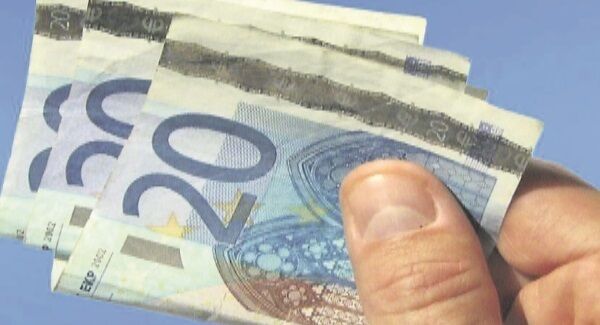Here's how to sell out at your first car boot sale

There’s no better time to step out and sell out at your first boot sale, says
The shattering ring of the alarm at 4am. Finding your way through foot-sucking mud in the amethyst half-light. The scent of crushed grass minced tenderly with the fragrant promise of onion rings and chips jigging together in peanut oil. It’s boot-sale season again.
If those boxes of “donations” you’ve winkled out during an afternoon of Marie Kondo madness are still proving a tripping hazard — what about a couple of days’ graft to finally get-rid and make some money in the process? A fistful of five-euro bills certainly sparks my joy.
Boot sales are frenetic events for sellers with decent things to offer. The major planning needs to take place days before your car treads hit the turf.
First of all, find out when your target location opens, and when the sellers are allowed to set up. Collect Ireland is the go-to for places and dates, collectireland.com. The sellers’ entry time may precede the gate time for the public by several valuable hours. You will want to grab a good spot and — if possible — wander the rows of other traders to snag underappreciated bargains (just as every professional and semi-professional boot-sale dealer does).
What sells? Visit one or two sales to get a feel for the market. Don’t offer rubbish fit for the skip. With plenty of competition for attention, chances are you will be dragging it all home. Goods should be clean, complete and fit for purpose. Ensure you know what you’re selling. This is important in order to talk it up to an interested customer and to ensure you don’t let something pricey go for too little.

The mundane but useful things tend to be steady money-makers over a day — the 50c to €5 objects. Toys, clothes, small vintage and lightly used modern accessories (termed smalls), useful and unusual furniture, ceramics, glass, CDs, DVDs, vinyl, plant seedlings and pictures generally fly at boot sales.
Electrical goods are best left alone by amateur sellers — is that item really safe and working to current safety standards? Men are always on the hunt for old garage ballast — drill bits, old hand tools, bits ’n’ bobs.
Price up each piece with a sticker — don’t write on anything with an indelible pen. Ticket prices are an arguable point — some dealers don’t openly price anything and use a sort of antique tick-tack coded systems of letters. I find this alienating. If you know what something is, say a date or maker, put that on the sticker too. Use a card with a tie on for better things to give them a bit of antique posh.
Don’t bring anything that might even possibly prove to be really valuable. A well-calloused dealer will talk you out of the object before the gates even open and may even re-sell it (and tell you about it, if they are really mischievous).
Google pieces you’re not sure of to get more informed about them and to weed out treasures to take for a proper appraisal.
If you are facing the sale alone or find you don’t have quite enough stuff to make the day out (and fee) worth it — phone a friend and team up. Company can transform a boot sale into a hilarious day out, and you won’t have to worry about tea and toilet breaks whatever happens.
A wallpaper-pasting table or any collapsible picnic table that’s relatively stable is fine for setting up shop. Larger goods can be brought to the venue in a small car trailer and staged in and around the trailer itself. If you’re selling fashion, be fashionable and use a printed oilcloth, fabric remnants, tiers and some judicious arrangement to draw an audience.
A portable dress rail can display clothing on hangers and things like pendant lighting. Jewellery (I’m presuming cheap costume) can be put in a fascinating tangle in an attractive vessel, hung on pins on a velvet board or put into small plastic bags arranged neatly under your eye.
Bring a chair or two, golf umbrellas, a flask, sandwiches, plastic and paper bags, newspaper and other wrapping material, tape, extra stickers and plenty of change in a box with a lid. Notes are best kept in a “bum bag” turned to sit under your jacket on your tummy and kept zipped shut. A sheet of clear builder’s plastic can be thrown over your wares during downpours while you sit on the tailgate of your backed-up car for some shelter. Ensure no paper ephemera, raw timber or fabrics are likely to get wet.

Get to the venue early to secure a good position close to the gate. The farthest avenues of a field or car-park get less attention. Attendees may have spent most of their money by the time they find you. The stewards will take the pitch fee, let you know where you can go and answer any questions. Ask where the loos are so that you can sprint over and get back quickly.
Set up your table and wave off nuisance viewers politely until you are ready for action. Be careful where you place things on the ground so as not to trip any passers-by.
Arrange more breakable things to the back of the table, ensuring top-heavy items are not likely to fall easily (put them on the ground or onto a crate or hefty upturned box if you’re not satisfied). Only put stout things in mixed boxes clearly inviting a dig.
Once the gates open at a busy event, the public (boot vultures) will swarm around a newly arrived car once the boot pops or you reach for a new box. You could find yourself confused and handing out pieces you haven’t taken a proper look at. Little knick-knacks can go into boxes marked from, say, a fiver, but be aware of what’s in there as things can be snatched up and waved at you — again, catching you off guard. Be vigilant, polite and firm with rummagers. Tiny things on the front of a table can be preyed upon.
The asking price is just a starting position. Sticking to a ticket price resolutely is the quickest way to clear off buyers. They resent it — I do. Even a couple of euros’ haggle over a €50 buy can move someone to accept a deal. The purchaser should feel they are winning — it’s part of the dance. Stating “That cost €120 new!” is another off-putting, irrelevant no-no. Tease your audience.
Boot-sale regulars do a few laps of the event over a couple of hours, so they may return to see what you’ve unveiled. Take a box or two out at a time. Lock the boot between visits if you don’t have someone to guard it.
Finally, don’t lie or embellish the history of anything. The nicest people turn into Dickensian villains with a 20-euro note floating before their eyes. Offer what you do know to be true and otherwise say “I’m not sure”. People are well able to whip out their phones and look something up on the web.
Conversely, don’t be talked down by know-it-alls. If you’ve decided on your bottom number (a shade under the ticket price or way under if you’re trying to clear the table at 3pm), stick to it.












